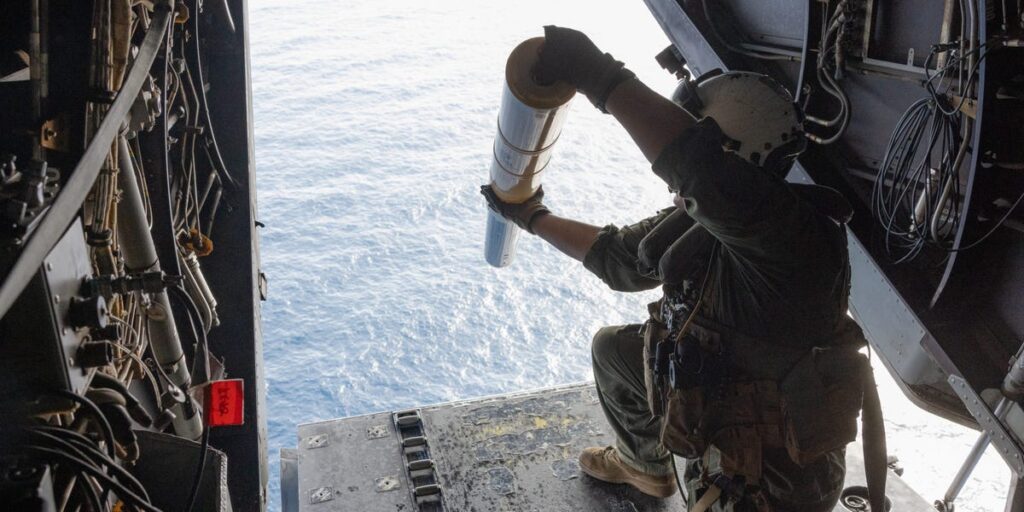Marines just wrapped up a training exercise that saw troops tossing sonobuoys out of the back of MV-22 Osprey tiltrotor aircraft, part of an effort meant to boost how the Marines and Navy can work together to fight enemy submarines.
“We’re past the question of whether the Marine Corps can contribute to ASW,” said Navy Capt. Bill Howey, director of maritime operations for Commander, Submarine Group Two, in a press release on the training. “Now we’re refining how they contribute and then integrating that into the fleet playbook.”
Anti-submarine warfare (ASW) involves detecting, tracking, and neutralizing enemy submarines using specialized ships, aircraft, sonar systems, and underwater weapons. It is a critical component of naval defense aimed at protecting fleets and strategic waterways from hidden underwater threats, though it hasn’t traditionally been a mission in which Marines have been involved.
Expendable sonobuoys, like those used in the exercise, are launched, or in this case dropped, from the air (from fixed-wing and rotary-wing aircraft and uncrewed airborne platforms) and are used for detecting and tracking submarines. They can also help with targeting subs for a torpedo attack.
The recent training was part of a yearslong reshuffling for the Marine Corps from fighting counterinsurgency warfare in the Middle East toward peer-level warfare against adversarial nations like China or Russia. It seems to be among the first times the DoD has relied on the Osprey for sonobuoy deployment.
Maj. Sean T. Penczak, the executive officer of Marine Medium Tiltrotor Squadron 162 said that “the Osprey’s unique capabilities as a tiltrotor aircraft allow it to excel within the framework of distributed aviation operations and expeditionary advanced base operations.”
“Its ability to cover long ranges with a payload comparable to the P-8, while maximizing time on station for time-critical tasking, has made it highly effective in the anti-submarine warfare arena— demonstrating its versatility and value as emerging threats continue to evolve,” he said of the Osprey.
The other aircraft Penczak referenced is Boeing’s P-8 Poseidon airplane, which is based on the civilian 737-800 and was created for maritime missions like anti-submarine warfare and anti-surface warfare. The plane can deploy torpedoes and anti-ship missiles and serves as a premier airborne ASW platform.
NATO countries have stepped up their anti-submarine warfare efforts in recent years in the Atlantic Ocean and Arctic amid more frequent Russian submarine activity. They are also ramping up efforts to combat unintentional damage and sabotage to undersea cables and critical infrastructure, sometimes relying on sensor systems, uncrewed surveillance, and patrols.
Sonobuoys like the ones used recently aren’t new to the US military’s arsenal of submarine detection tools, though they are a new tool for Marines. The sensors were developed during World War II in response to German U-boats’ attacks on Allied vessels in the Atlantic.
A DoD technical paper described this tech as a “simple, reliable, inexpensive, technically complex, adaptive, and effective device that has been produced by the millions and used for almost seventy years.”
“A few years ago, the idea of Marines flying [anti-submarine warfare] missions might have raised eyebrows,” Col. James C. Derrick, commanding officer, Marine Aircraft Group 26, said in his statement. “Now we’re doing it as part of the plan, using the Osprey’s unique capabilities to help enable naval maneuver.”
Read the full article here
















